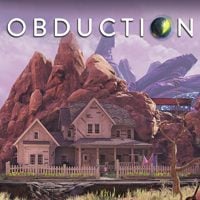Obduction review – beautiful, difficult, captivating
A first-person adventure game that’s neither survival nor horror? Obduction draws from the classics of the genre as a spiritual successor to the Myst series.
The review is based on the PC version. It's also relevant to PS4 version(s).
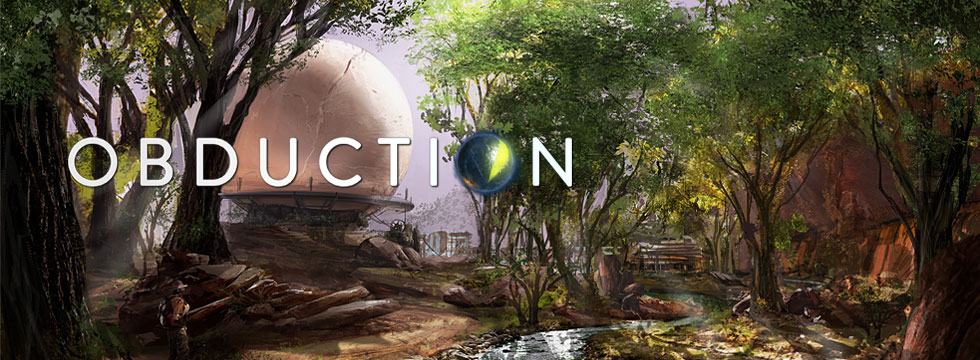
- Atmospheric and engaging;
- Difficult, plot-related puzzles;
- Live actors instead of 3D models;
- Visually very good.
- Terribly lengthy loading screens;
- Stutters when loading assets.
Presumably every fan of adventure games knows, or at least has heard of, the Miller brothers: Rand and Robyn. In the first half of the 90s, these guys spurred on a great leap in quality of interactive storytelling. Their studio Cyan hugely contributed to the popularization of CD, releasing Myst on a compact disk – first for Macintosh and then for PC. This game also laid the foundations for one of the most interesting first-person adventure game series while starting the era of video game smash hits.
The adventures of a nameless hero traveling through the “Ages” – different realms of a virtual universe – were on the top of the best-selling game list for nine years, and it wasn’t until the first Sims came out that this impressive run was interrupted.
Myst, although it wasn’t the first game of its kind (it came out a couple of months after The 7th Guest), managed to become a benchmark for the emerging genre of adventure games. Similarly to the Doom-esque games which were widely popular back in the early 90s, during the following years all sorts of Myst-like productions, such as Atlantis, Amerzone or Schizm gained recognition among the players and critics alike.

To say the least, the team from Cyan has definitely taken its time making another game that would be at least remotely linked to the spirit of that series, as the last part of the Myst saga was released eleven years ago. A chance for it to happen appeared when it became possible to Kickstart such a project. Rand Miller and his team managed to gather USD 1.3 million for the purpose of funding Obduction – a title bearing so much resemblance to classic first-person adventure games that it’s difficult to go any further than that. This is how we got into the Unreal Engine 4-rendered world of Hunrath, which contain mysteries of several civilizations “trapped” on an enigmatic planet. Mysteries that the player, once again turning into the nameless hero, will try to uncover.
The protagonist doesn’t know who they are or how they got there. It’s just a random person that was teleported into an unknown place after seeing an otherworldly shining ball in the sky. The place is actually a fragment of Arizona, in the center of which there lies a sun-scorched mining town. The thing is that the whole area is covered by a weird dome conveying energetic force, which nothing can penetrate. At least at the beginning, because as the story and exploration progress, we are able to visit fragments of other worlds, whose landscapes are totally different.
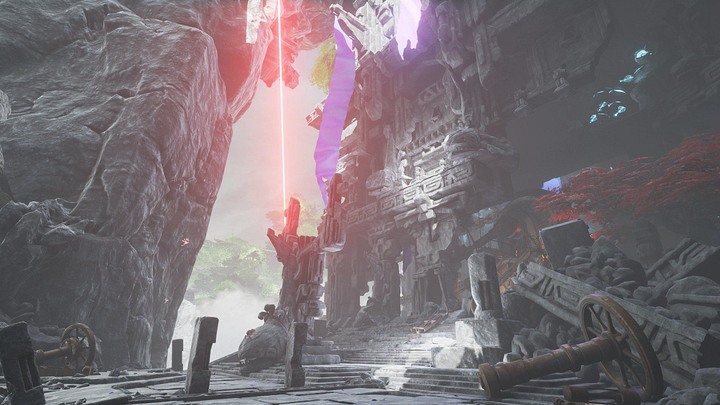
The character creation here is limited to the choice of… a shadow that the protagonist will cast in the game – it can be either that of a woman or a man. As it soon turns out, the town is abandoned, and we are welcomed by holograms of its former inhabitants. The game was quick to earn my appreciation thanks to the use of real actors. There are no bizarre 3D models; just the magic of a video clip. I loved it, even if eventually it became apparent that there are rather few of these holos (save for those of a certain character by the name of C.W., who, however, had decided to isolate himself from the rest of the town with an armored door). This solution is a nod to the old days, when FMV characters in games were something obvious, and everyone was sure that movies and video games would soon merge into a single medium.
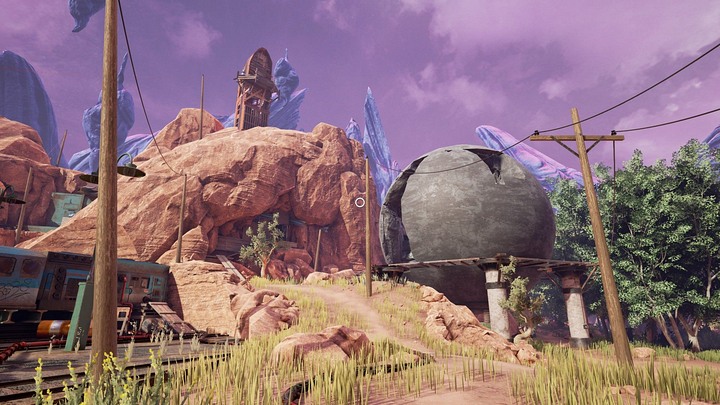
Naturally, the FMVs in Obduction are not nearly as omnipresent as their counterparts from the old days, but since I’m a sensitive type, prone to nostalgia, I appreciated the holograms very much, and despite all their shortcomings, I yearned for more.
However, what looks like the developers’ nod towards people like me was probably just a matter of money; it’s much faster and cheaper to put two people in front of a camera than to build multiple models from thousands of polygons, and then try to make sure they have a personality. The visuals might have that old-school vibe, but the gameplay is absolutely up to modern standards.
When our avatar makes its first appearance in the virtual world, we know absolutely nothing – and that’s what is beautiful about games such as this. The players have to stitch together the pieces of the story, scattered across the whole game world, all by themselves. Finding documents, examining the architecture and exploring the locations allows you to gradually build a bigger picture. If you encounter some kind of contraption, there’s nobody to tell you how it works. You have to figure it out on your own how to set in motion a machine that you see for the first time in your life. You have to look for cause and effect. Throughout the game, it was an incredibly fun thing to do. I assume that the game’s atmosphere had something to do with it, as it’s unlike horror or survival, the genres exploited beyond any reasonable limit.
Obduction is all about adventure. A little bit scientific, and a little bit fantastic. Observation is the key – what are the relations between things?; where do I find an answer?; how the hell does it work? When you finally manage to overcome such problems, the satisfaction is truly amazing. Especially because some puzzles are genuinely difficult, and it’s not easy to solve them just like that. You have to think – a lot.
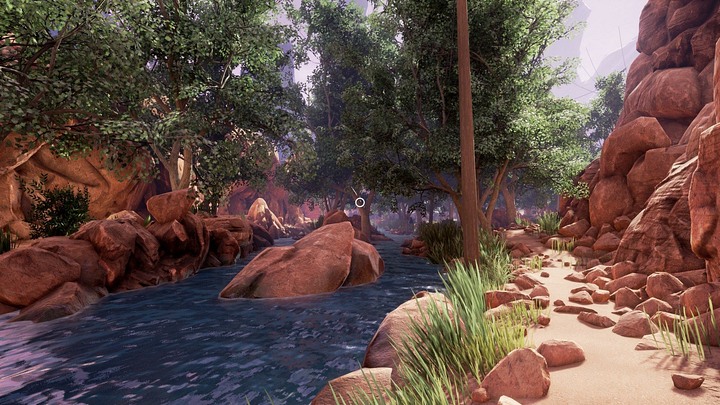
However, we’ve already seen most of these things more than once, and well-delivered too. “What’s so fresh about the mechanics of Obduction?”, I hear you ask. First of all, there are no tasks which serve to create an illusory impression of progress while in fact the player accomplishes nothing – no connecting wires, no working your way around a system of pipes and valves. You have no pockets so you cannot carry any equipment.
What’s original about this game’s mechanics is that all the challenges are closely related to the story. You do things because the plot demands it. It doesn’t mean that the game forces us to rush ahead, though. There is still a dose of somewhat purposeless – yet enjoyable – sauntering around in order to find things that might have been overlooked. I finished the game in a rather relaxed pace in around sixteen hours; a big part of that time I spent exploring the same fragments of the map. The second playthrough, when you know what’s what, shouldn’t take more than four hours. If you’re one of them impatient types, there’s nothing for you to see here.
The developers allow the player to choose from two methods of exploration: a typical modern-day free mode, or the classic node-based system, which is prepared mostly with VR in mind to reduce the nauseous effects otherwise provoked by free exploration; for now, I see no other use for this feature. Fortunately, nobody forces us to use the point-and-click exploration method.
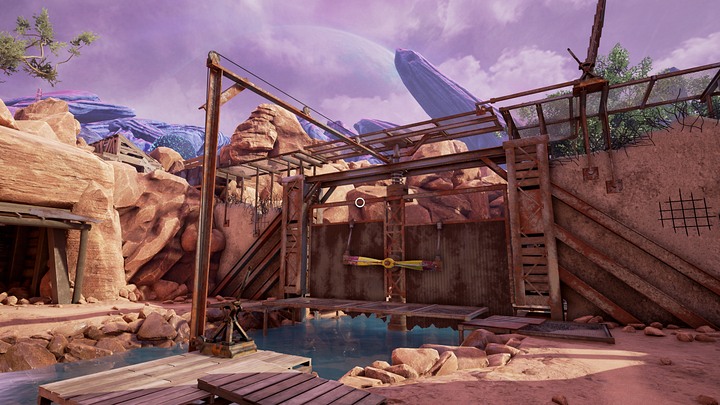
Now it’s time for some criticism, which will mostly focus on the technical side of the game. The loading times are far too long, both the first loading of a given world or subsequent changes between locations. It’s awfully tiresome. Anyone who played The Witcher 3 on PlayStation 4 will get the idea – you can start loading the game and help yourself to a cup of tea and a piece of cake before it ends. What’s even worse, Obduction also needs a loading within one and the same world, when you go underneath the surface, for example. It also stutters when some assets are loaded on the fly; getting into a house almost always means a small jerk of the framerate.
Obduction is a greatly written and well-executed story, drawing from the classics of the genre in a very obvious manner. From the very first moment, it’s incredibly engaging and compelling, even despite the fact that the first hour is spent by running around pointlessly like a headless chicken. This game is for patient people, diligent Mr. Spock-like analysts… maybe I went a little too far with that comparison, but you get the idea. It’s beautifully delivered, with a more than decent soundtrack. The puzzles are challenging and most of the time they require an attentive observation of the environment. The only shortcomings here are the small technical troubles, but we would be a happier species if every game only had problems like that. Thank you, Cyan, for delivering something to marvel at once again.
Obduction
Obduction review – beautiful, difficult, captivating
A first-person adventure game that’s neither survival nor horror? Obduction draws from the classics of the genre as a spiritual successor to the Myst series.

